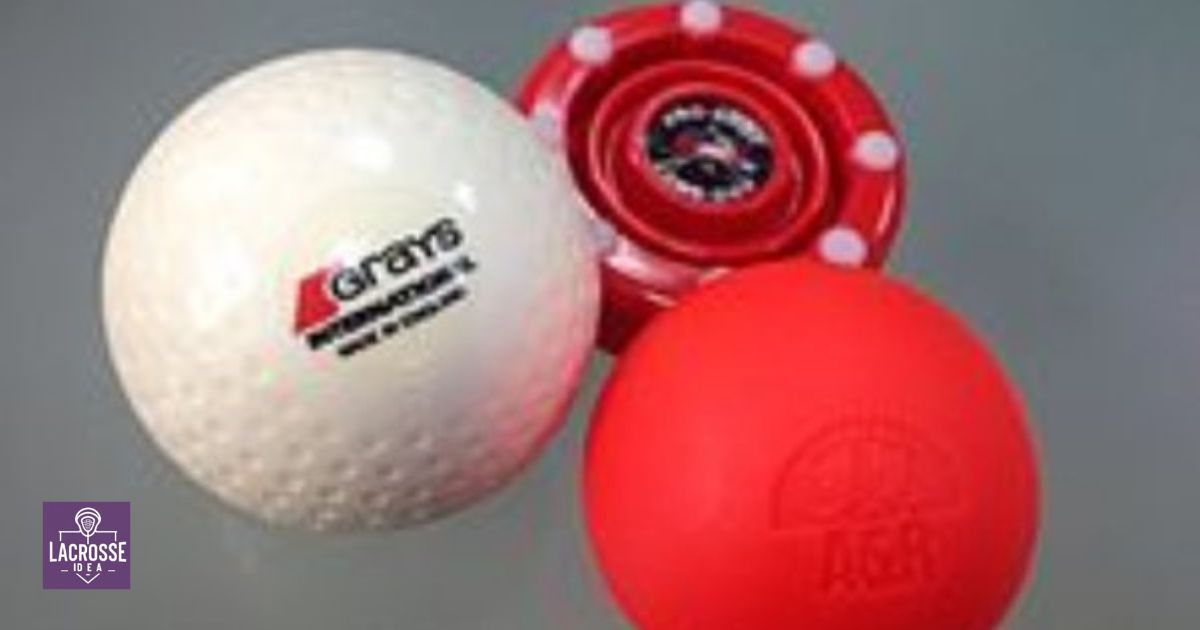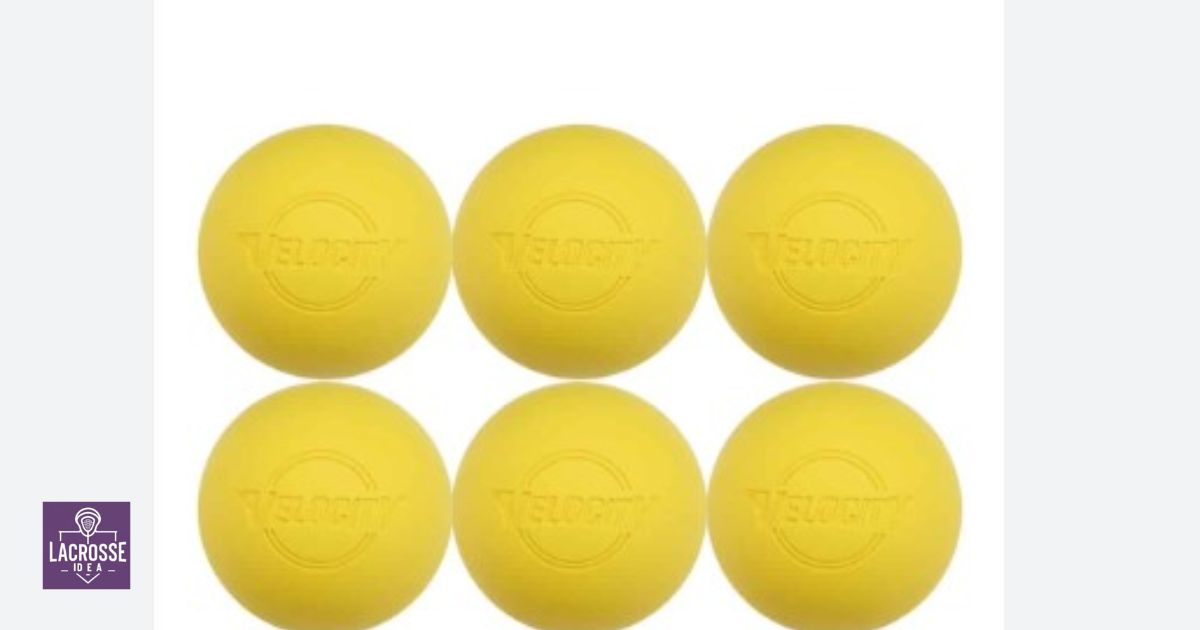Field hockey and lacrosse are two popular sports that share similarities in terms of gameplay and equipment. However, when it comes to the balls used in these sports, there are distinct differences that should not be overlooked. In this article, we will explore the question: are field hockey and lacrosse balls the same? By examining key factors such as size, weight, material composition, texture, and color, we aim to provide a comprehensive analysis of the unique characteristics of these balls.
We will consider the implications these differences have on performance and equipment requirements. So, if you’re curious to know whether these balls are truly identical or if there are notable distinctions, stay tuned for the answers in the following sections.
Key Takeaways
- Field hockey balls and lacrosse balls have differences in size and weight, with field hockey balls being larger and heavier than lacrosse balls.
- The material composition of field hockey balls and lacrosse balls also differ, with field hockey balls being made of hard plastic and lacrosse balls made of solid rubber.
- The texture and color of the balls also vary, with field hockey balls having a hard, smooth surface and lacrosse balls having a slightly softer and more rubbery texture.
- The characteristics and performance factors of field hockey balls and lacrosse balls make them essential equipment for each sport, with field hockey balls providing better control and accuracy and lacrosse balls allowing for faster and more agile gameplay.
Key Differences In Size
Field hockey and lacrosse balls differ in size. While both sports involve the use of a ball, it is important to note that the dimensions of these balls vary significantly. A field hockey ball typically measures 2.5 inches in diameter, whereas a lacrosse ball is slightly smaller, with a diameter of 2.25 inches. This distinction in size may seem minimal, but it can have a significant impact on the gameplay and the equipment used.
The larger size of the field hockey ball provides players with a larger target to aim for, requiring more precision and control. On the other hand, the smaller size of the lacrosse ball allows for faster and more agile gameplay. Now that we have explored the key differences in size, let’s move on to comparing the weight of these balls.
Varied Weight Comparisons
The weight of field hockey and lacrosse balls also differs significantly, further contributing to the distinctive gameplay experienced in each sport. The weight of a field hockey ball typically ranges from 5.5 to 5.75 ounces (156 to 163 grams), while a lacrosse ball weighs between 5 and 5.25 ounces (142 to 149 grams). This variation in weight may seem minor, but it can have a substantial impact on the dynamics of the game.
The lighter weight of a field hockey ball allows for faster and more accurate passes and shots, enhancing the speed and agility required in the sport. On the other hand, the slightly heavier lacrosse ball provides players with better control and stability, allowing for harder shots and more physical gameplay.
| Sport | Field Hockey Ball Weight (ounces) | Lacrosse Ball Weight (ounces) |
|---|---|---|
| Field Hockey | 5.5 – 5.75 | – |
| Lacrosse | – | 5 – 5.25 |
Material Composition Distinctions
The composition of field hockey and lacrosse balls differs significantly in terms of their material. Field hockey balls are typically made of solid plastic, specifically a hard, durable material called polyethylene. This material provides the necessary strength and resilience needed for the fast-paced nature of the game. On the other hand, lacrosse balls are made of solid rubber.
This material allows for a certain level of flexibility and bounce, which is essential for the dynamic movements and high-speed gameplay in lacrosse. The use of different materials is crucial as it directly affects the performance and behavior of the balls during play. Therefore, while both sports involve a ball and a stick, the composition of the balls themselves sets them apart in terms of material properties and performance characteristics.
Texture And Color Variations
Texture and color variations distinguish field hockey and lacrosse balls. While both balls are round and similar in size, their textures and colors set them apart. Field hockey balls have a hard, smooth surface, often made of solid plastic or composite materials. The smooth texture allows for better control and maneuverability on the field. In contrast, lacrosse balls have a slightly softer and more rubbery texture, making them easier to grip and catch with a lacrosse stick.
Additionally, the color of the balls differs. Field hockey balls are typically white or brightly colored, allowing players to easily spot them on the field. Lacrosse balls, on the other hand, are primarily yellow, making them highly visible during gameplay. These texture and color variations play a significant role in the different requirements and strategies of each sport.
Field Hockey Ball Characteristics
Field hockey balls possess distinct characteristics that set them apart from lacrosse balls. These characteristics contribute to the unique nature of the game and enhance the players’ experience on the field. Field hockey balls are typically made of hard plastic or composite materials, which provide durability and resilience. They are smaller and lighter than lacrosse balls, allowing for faster and more precise gameplay.
The surface of a field hockey ball is smooth and solid, promoting better control and accuracy when striking or passing the ball. Additionally, field hockey balls have a hollow core, which helps absorb impact and reduces the risk of injury. These specific characteristics make field hockey balls essential equipment for the sport and ensure a thrilling and safe playing experience for athletes.
Lacrosse Ball Features
Lacrosse balls possess unique features that distinguish them from field hockey balls. These features contribute to the game of lacrosse and make the balls specifically designed for that sport. Here are some key characteristics of lacrosse balls:
- Size: Lacrosse balls are slightly smaller than field hockey balls, measuring around 7.75 to 8 inches in circumference.
- Weight: Lacrosse balls are heavier than field hockey balls, weighing approximately 5 ounces.
- Material: Lacrosse balls are made of solid rubber, providing durability and resilience during gameplay.
- Color: Lacrosse balls are typically bright yellow, making them highly visible on the field.
These features ensure that lacrosse balls meet the specific requirements of the sport, allowing players to have precise control and accurate shots. Whether you’re a seasoned lacrosse player or just curious about the differences, understanding these distinct features of lacrosse balls can deepen your appreciation for the game.
Safety Considerations
When considering the use of field hockey and lacrosse balls, it is important to take into account safety considerations. Both sports involve high-speed play and the use of hard balls, which can increase the risk of injury. The hardness and weight of the ball can result in painful impacts if players are not properly protected. Therefore, it is crucial for athletes to wear appropriate protective gear, such as helmets, mouthguards, and shin guards, to minimize the risk of injury.
Players should be mindful of the techniques used to handle the ball, as improper handling can lead to accidents and injuries. By prioritizing safety and adhering to proper equipment and techniques, athletes can enjoy the game while minimizing the risk of harm. Transitioning into the subsequent section about playing surface implications, the playing surface also plays a role in safety considerations.
Playing Surface Implications
Considerations regarding the playing surface have significant implications for the use of field hockey and lacrosse balls. The type of surface on which these sports are played can affect the performance and durability of the balls, as well as the safety of the players. Here are some key points to consider:
- Grass surfaces provide a natural feel and are commonly used for both field hockey and lacrosse. However, the impact on the balls can vary depending on the condition of the grass and the presence of divots or uneven patches.
- Artificial turf is becoming increasingly popular for both sports due to its durability and consistent playing surface. However, the hard surface of some turf fields can cause the balls to bounce higher and faster, affecting the gameplay.
- Indoor surfaces, such as gym floors, offer a controlled environment but may require specific balls designed for indoor use to prevent damage to the surface.
- Wet or muddy conditions can significantly impact the performance and grip of the balls, making them more difficult to control.
Considering these playing surface implications is crucial for selecting the most appropriate balls for field hockey and lacrosse. Moving forward, let’s explore the performance factors that differentiate these two sports.
Performance Factors
One important factor to consider when comparing field hockey and lacrosse balls is their performance characteristics. Both balls are designed to meet the specific requirements of their respective sports, which can greatly impact the performance of the players.
To highlight the key differences in performance, let’s take a look at the following table:
| Performance Factors | Field Hockey Balls | Lacrosse Balls |
|---|---|---|
| Bounce | Low | High |
| Grip | Smooth | Rough |
| Speed | Slower | Faster |
As you can see, field hockey balls have a lower bounce compared to lacrosse balls. This is because field hockey requires more control and precision, whereas lacrosse demands a higher bounce for faster gameplay. Additionally, field hockey balls have a smoother surface for better grip, while lacrosse balls are rougher to allow for better handling and shooting.
Considering these performance factors, it is clear that field hockey and lacrosse balls have distinct characteristics that cater to the specific needs of each sport. Moving forward, let’s now explore the equipment requirements for both sports.
Equipment Requirements
To properly participate in field hockey and lacrosse, players must adhere to specific equipment requirements. These requirements ensure the safety and fairness of the game, as well as enhance the overall playing experience. Here are some of the essential equipment items for both field hockey and lacrosse:
- Sticks: Field hockey and lacrosse sticks are designed differently to suit the specific needs of each sport. Field hockey sticks have a rounded head and are typically made of composite materials, while lacrosse sticks have a net pocket at the end for catching and throwing the ball.
- Protective Gear: Both sports require players to wear protective gear such as helmets, mouthguards, and gloves to minimize the risk of injury during gameplay.
- Cleats: Proper footwear is crucial to ensure good traction and stability on the field.
- Uniforms: Team uniforms help distinguish players and promote a sense of unity among teammates.
Skill Set Requirements
In order to excel in field hockey and lacrosse, players must possess a diverse range of essential skills. Both sports require a high level of hand-eye coordination, agility, speed, and endurance. Players in both field hockey and lacrosse must be able to effectively pass and receive the ball, as well as possess strong stick-handling skills.
They must have the ability to read the game and make quick decisions under pressure. While field hockey focuses more on precise stickwork and positioning, lacrosse places greater emphasis on quick footwork and shooting accuracy. However, both sports demand teamwork, communication, and the ability to adapt to changing game situations. These shared skill set requirements indicate some similarities between field hockey and lacrosse, but are they truly the same?
Are They Truly The Same?
Based on the analysis of their skill set requirements, it can be concluded that field hockey and lacrosse share many similarities, but they are not truly the same sport. While both sports involve the use of a ball and require agility, coordination, and teamwork, there are distinct differences that set them apart.
Here are some key points to consider:
- Field hockey focuses on stick skills and requires precise ball control, while lacrosse emphasizes the use of a stick to catch and throw the ball.
- The field dimensions and playing surfaces differ between the two sports, with field hockey played on turf or grass and lacrosse often played on a synthetic field.
- The rules and strategies also vary, with field hockey emphasizing passing and possession, while lacrosse involves more running and shooting.
- Finally, the equipment used in each sport differs, with field hockey players using a stick with a curved end, and lacrosse players using a stick with a netted pocket.
While field hockey and lacrosse have similarities, these differences highlight that they are distinct sports with unique characteristics.
FAQ’s
What is hockey ball called?
Another informal term for a hockey puck is a “biscuit”. To score a goal is to put the “biscuit in the basket,” as the phrase goes.
What is the oldest sport?
The earliest and most fundamental kind of combat used for recreation, wrestling dates back to the early stages of human civilization. Discovered in caves in southern Europe, carvings and drawings that are thought to be between 15,000 and 20,000 years old depict wrestlers in hold and leverage positions.
How many types of hockey balls are there?
Mercian offers indoor hockey balls, mini hockey balls, smooth hockey balls, and dimple hockey balls.
Why do girls use yellow lacrosse balls?
The solid rubber ball used in lacrosse games, along with a lacrosse stick, is called a lacrosse ball. Although the PLL uses optic yellow balls for better TV visibility. It is usually white for men’s lacrosse or yellow for women’s. However, the balls come in a wide range of colors.
Conclusion
In conclusion, while field hockey and lacrosse balls share some similarities, they are not the same. The key differences in size, weight, material composition, texture, and color make them distinct from each other. Furthermore, their different characteristics and performance factors require specific equipment and skill sets. Symbolically, these variations represent the uniqueness and individuality of each sport, emphasizing the importance of understanding and appreciating their differences.








